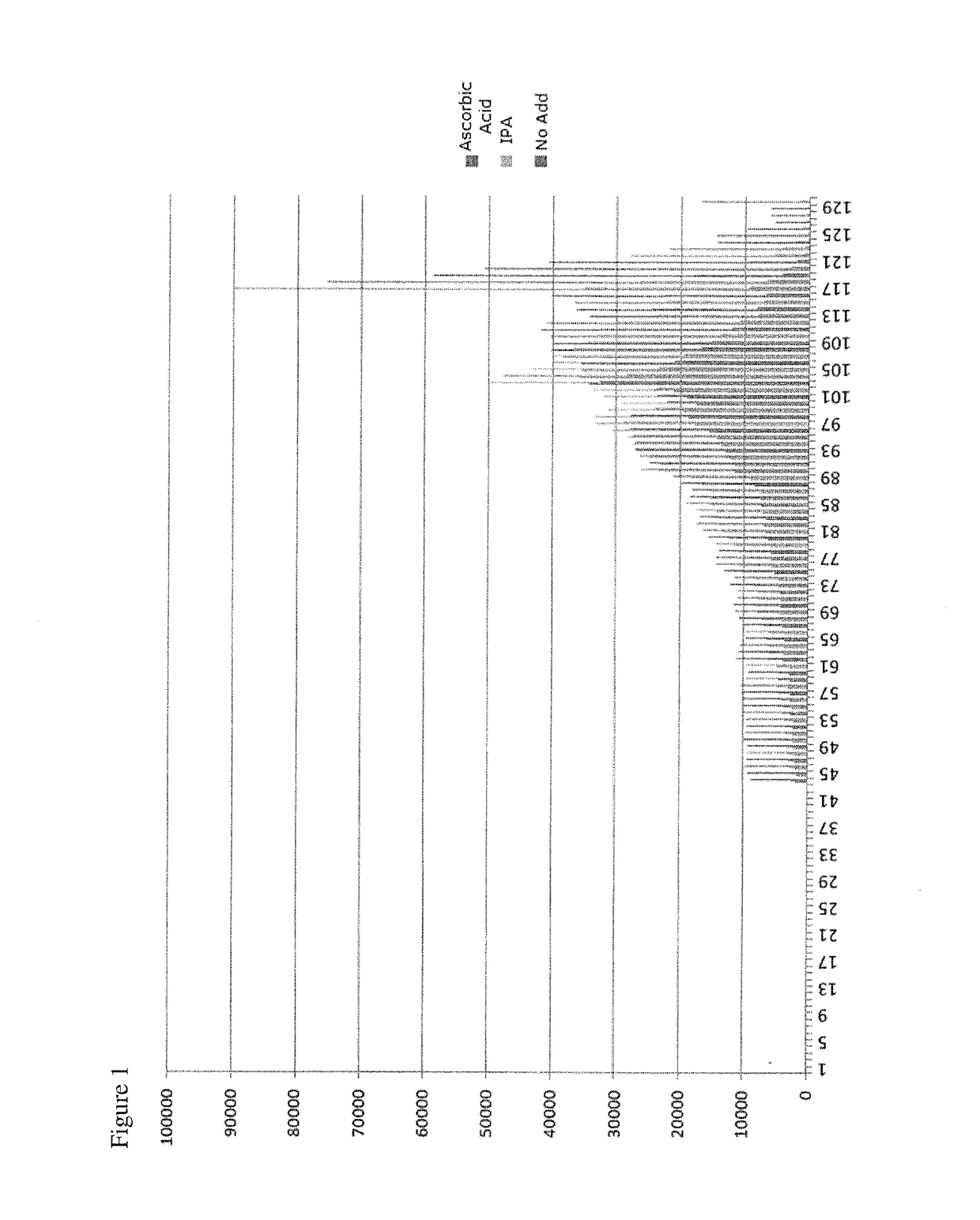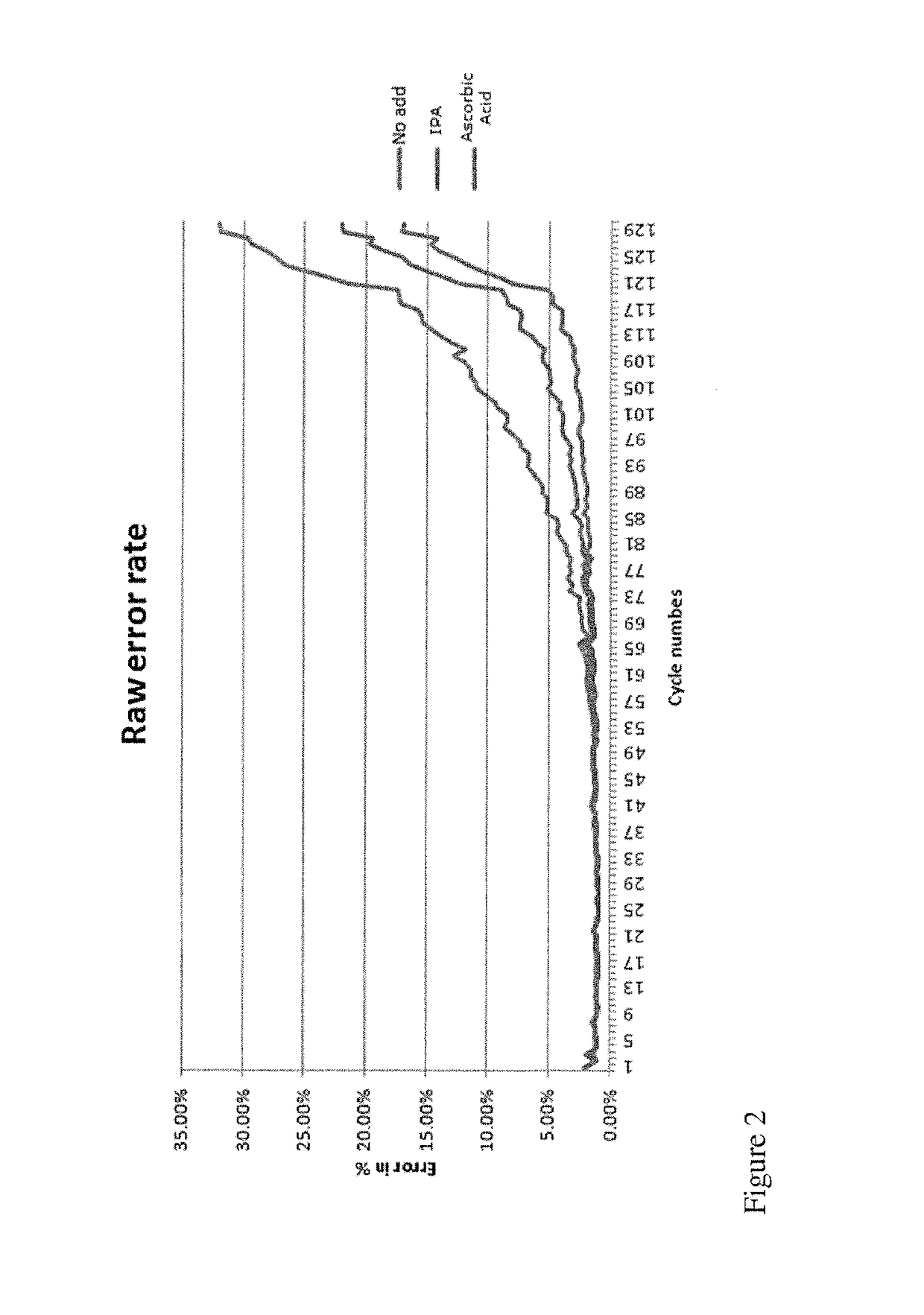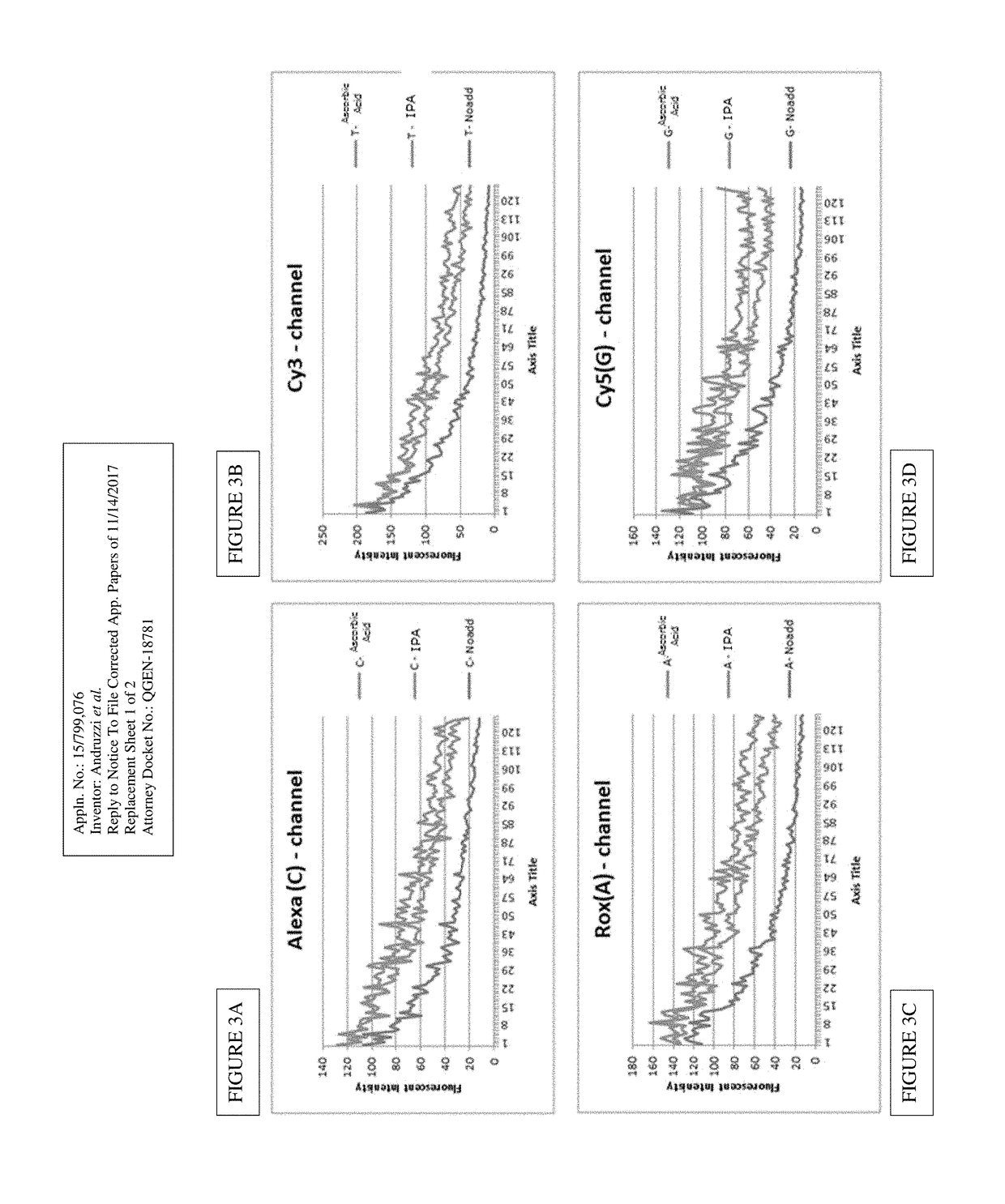Antioxidant Compounds For Cleave Formulations That Support Long Reads In Sequencing-By-Synthesis
- Summary
- Abstract
- Description
- Claims
- Application Information
AI Technical Summary
Benefits of technology
Problems solved by technology
Method used
Image
Examples
example 1
[0052]In one embodiment, the present invention contemplates a SBS method comprising the steps shown in Table 3. See Olejink et al., “Methods And Compositions For Inhibiting Undesired Cleaving Of Labels” U.S. Pat. No. 8,623,598 (herein incorporated by reference in its entirety).
TABLE 3An Exemplary SBS WorkflowFluid MovementsVolumeSpeedStationTempTimeStepReagentmLmL / sNumber° C.[s]1. Dispense ReagentReagent 11006736572. Incubate ReagentReagent 1n / an / a3652103. Dispense ReagentReagent 21006746574. Incubate ReagentReagent 2n / an / a4652105. Dispense ReagentReagent 3330275Ambient126. Dispense ReagentReagent 4 + 5200275Ambient157. Imagen / an / an / a11Ambient2108. Dispense ReagentReagent 3330272065129. Dispense ReagentReagent 610067165710. Incubate ReagentReagent 6n / an / a16521011. Incubate ReagentReagent 6n / an / a26521012. Dispense ReagentReagent 7990272653713. Go to Step 1Reagent 1 = Extend A;Reagent 2 = Extend B;Reagent 3 = Wash;Reagent 4 = Image A;Reagent 5 = Image B;Reagent 6 = Cleave;and Reagent ...
example 2
[0053]In one embodiment, the present invention contemplates a method for Cleave Optimization for Long Reads: Ascorbic Acid Titration. Conditions may vary in this method. In one embodiment, ascorbic acid is approximately 40 mM in Cleave Mix. In one embodiment, ascorbic acid is approximately 60 mM in Cleave Mix. See Table 4. In one embodiment, the method uses Four GeneReaders and same gene panel pool. In one embodiment, the Sequencing protocol comprises 157 cycles.
[0054]The condition: 60 mM AddA in Cleave yields improved performance with the average read length ˜10% longer than AA 40 mM and the raw error rate ˜20% lower than AA 40 mM. Condition Locked for System Verification to support GR1.1 Product Launch: AA 60 mM.
[0055]Re-analysis with new SW (upgraded with new look-up-table) yielded improved KPI's: Average read length=130 bp; Filtered Output=2.2 Gb; and Q-Score=84%@Q25; See sample data set in Table 5. Table 5 shows Cleave Production Lot: QC by functional test prior to System Verif...
PUM
| Property | Measurement | Unit |
|---|---|---|
| Molar density | aaaaa | aaaaa |
| Molar density | aaaaa | aaaaa |
| Molar density | aaaaa | aaaaa |
Abstract
Description
Claims
Application Information
 Login to View More
Login to View More - R&D
- Intellectual Property
- Life Sciences
- Materials
- Tech Scout
- Unparalleled Data Quality
- Higher Quality Content
- 60% Fewer Hallucinations
Browse by: Latest US Patents, China's latest patents, Technical Efficacy Thesaurus, Application Domain, Technology Topic, Popular Technical Reports.
© 2025 PatSnap. All rights reserved.Legal|Privacy policy|Modern Slavery Act Transparency Statement|Sitemap|About US| Contact US: help@patsnap.com



